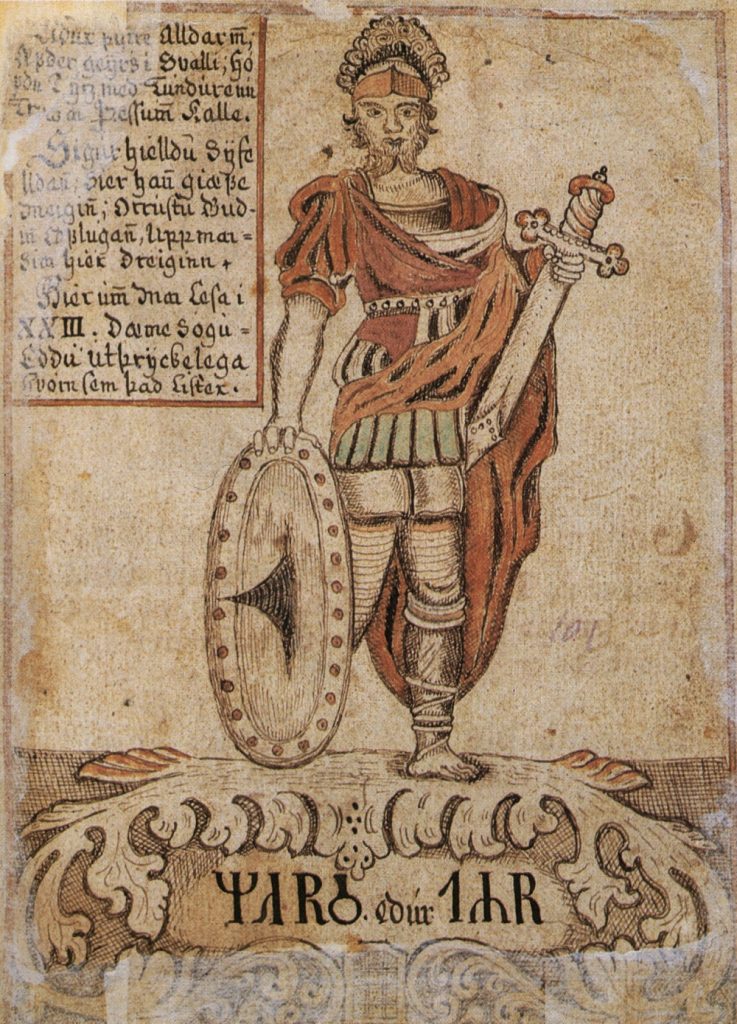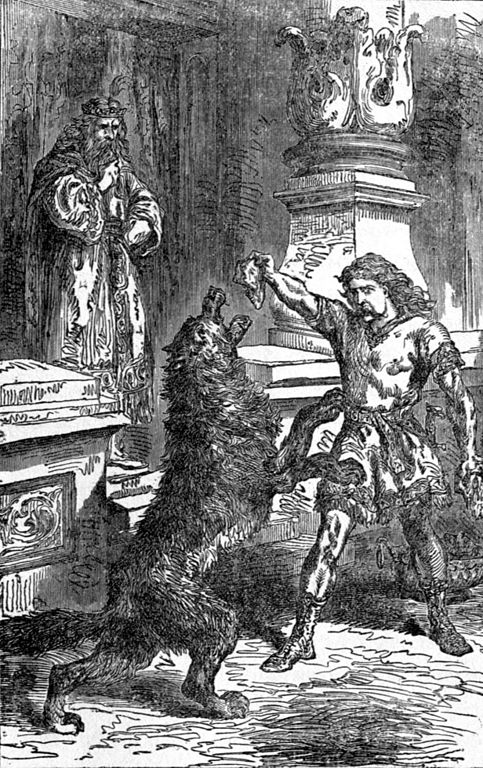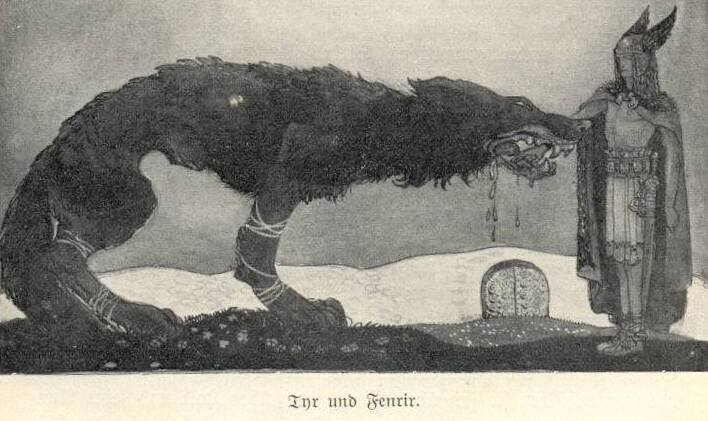Among the Germanic people, Tyr is one of the oldest gods. He is the god of war and bloodshed and the lord of law and justice, two aspects that seem to be a paradox converging in one being.
He’s the bravest of the gods, and unlike Odin, who sacrificed his eye for self-edification, Tyr sacrificed his hand to bind the ferocious wolf Fenrir (Loki’s son) to save the gods from its threats (more details below).
Surprisingly, despite his remarkable attributes, there is little info about Tyr in Norse mythology. But that’s because Tyr was majorly recognized by the Germanic people, who later were absorbed into the Viking age.
What Is Tyr the God Of?
He is the god of war, law, and justice. His name Tyr means ‘a god or the god’, originating from the proto-germanic name tiwaz, which means deity.
He is mentioned in the Poetic Edda as the Norse god of war, who protects soldiers in battle and grants victory from enemies.
Interestingly, a god of war could be, at the same time, the lord of justice and guardian of oaths. However, among the Norse pantheon, the Vikings regarded the two (war and justice) to be inseparable. War was governed by laws.
Tyr is closely associated with the Greek god Mars Thingsus, the god of war and upholder of justice.
Interesting fact: Tuesday is attributed to this god of war and justice, Tyr. It’s Tyr’s Day.

The Origin of Tyr
The records are pretty contractionary when it comes to the origin of Tyr. The Prose Edda, Hymiskviða, and Skáldskaparmál depict Tyr as either descending from the jötunn Hymir (Hymiskviða) or being the son of Odin, the father of Thor (Skáldskaparmál).
Definitions:
- Prose Edda: These are the anonymous poems of the ancient Norse myths.
- Jötunn: Pronounced in Old English as eoten. These are supernatural beings with non-human figures. In Norse mythology, they’re contrasted with the gods; they include the dwarfs and the elves.
- Hymir: Little is known of him. He is mainly known for his hard head and his epic journey with Thor to hunt Jörmungandr, the great serpent (one of Loki’s sons).
If we side with the Prose Edda, Hymiskviða suggests that Tyr is the son of Odin. Then his half-brothers are; Thor, Váli, Bragi, Hermod, Vidar, Hodr, and Heimdall, as well as Baldr, prime gods in Norse myths.
Are Tyr and Thor the Same?
They’re different. While it’s plain that Thor is the son of Odin, it’s not really clear whether Tyr is the son of the all-father god.
In terms of purpose, both are considered the gods of war; however, when it comes to justice and law, Tyr is prominent. Thor is depicted more as the war god than an upholder of justice, the defender of the Asgard gods.
However, on the other side, Tyr is more of a peace god, always giving himself for the sake of the gods and the people. He’s the one who gave his right hand to bind up Loki’s son, Fenrir.
The Story Of Tyr In Norse Mythology: How He Became The One-handed God
The old Norse poem (Gylfaginning) involves one of the fantastical sons of Loki, Fenrir, the monstrous wolf.
Fenrir wasn’t an ordinary growing wolf, the animal was fast growing into a ferocious beast, and the gods feared the chaos it might unleash if left alone.
So they plotted a way to contain the beast by tricking the beast into a binding competition. The game was to bind the beast with ropes and chains and see whether Fenrir could break free.
The intention of the gods wasn’t to be entertained or test the strength of Fenrir but to bind the beast for good. There was no amount of rope or chain that could contain the creature.
Out of despair, they called for the Svartalfheim dwarves to make for them the ultimate rope, Gleipnir, made out of:
- The nerves of bears
- The noise of cats’ steps
- The spittle of birds
- The roots of mountains
- The beards of women
Fenrir, suspicious of the light ribbon but persuaded by the gods, agreed on one condition; that one of the gods would place his hand in his mouth for good faith. No one was courageous to do it since they all knew the consequences.
But, god Tyr, willing to do anything for peace, placed his right hand, and the gods tied the beast.
When Fenrir realized he couldn’t break free and was tricked by the gods, he ripped off Tyr’s hand, and that’s how he became the one-handed god.

Is Tyr a Good God?
He’s one of the few good gods Asgard has, and the proof is his willingness to sacrifice his hand for the good of others.
He’s also known for upholding justice and always seeking peace among fighting enemies.
Who Killed Tyr in Norse Mythology?
At Ragnarök, which means the end of the gods and the world, the great battle, Tyr is killed by Hel’s dog Garm.
What Rune/Colors Are Associated With Tyr?
Tyr’s always associated with the rune ᛏ (Tiwaz). The word ‘rune’ means the proto-Germanic alphabet, commonly called the runic alphabet.
Aside from the rune ᛏ, Tyr is also associated with two colors: steel gray and dark red.
Interesting fact: The rune ᛏ was also used by the Nazis in their war campaign. Sturmabteilung, a significant paramilitary training school for Adolf Hitler’s campaign, used the rune in their banner.

